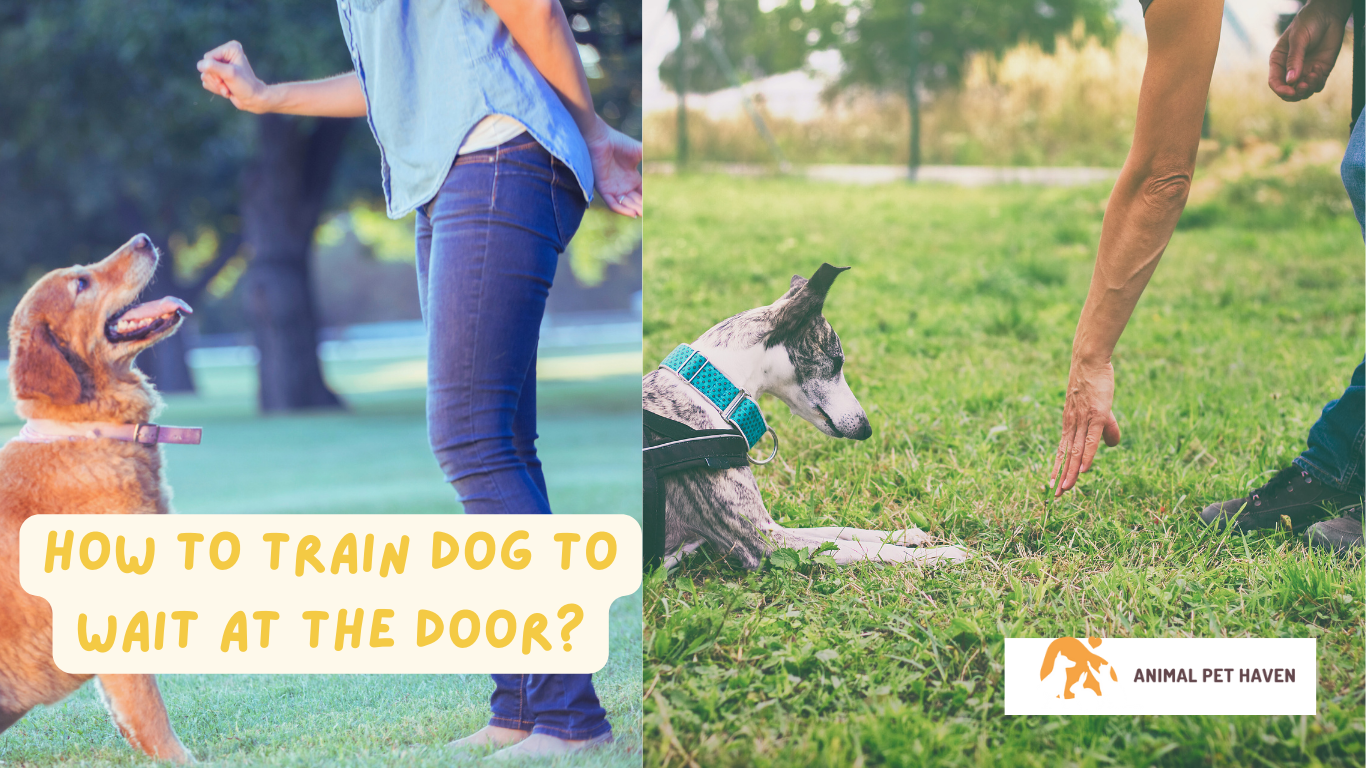Teaching your dog to wait at the door is a key part of house training. When I say house training, I mean teaching the dog how to behave in your home and yard, not necessarily breaking in to use the toilet outside instead of inside the house. House training is rules like no counter surfing, no getting in the litter box, no running around the house, no chewing the furniture, etc. But today we are going to focus on how to teach your dog to wait at the door.
Let’s start with why it is important to teach your dog to wait at the door. A dog rushing through an open door will cause you to get hurt, or your dog will end up outside off-leash, or both. And if your dog doesn’t have a perfect recall, which it certainly doesn’t, unless it waits at the door.
You’re in for heart-pounding action as you hope and pray your dog doesn’t run out into the street, run. stand up to another dog and fight, or if they are reactive to people, bite someone and get sued and possibly have them euthanized. These are things that I’m sure are universally undesirable outcomes. So let’s get down to how to teach your dog to wait at the door!
10 Ways to Train Your Dog How to Wait At The Door
1. Start with a Leash:
Attach a leash to your dog’s collar for better control during training. The goal, of course, is to not need a leash to leave the house without taking your dog with you, but before we run out, we need to walk. Using a leash is much better than blocking your dog with your body, saying “No, no! Sit” 10 times, etc. Maybe it will work eventually, but using a leash is less headache for you, less confusion for the dog, and therefore much faster .
2. Choose a Cue:
Decide on a verbal cue such as “wait” or “stay” that you will use consistently throughout the training process. Words are important. Whichever order you decide on, never change it. Write it down if you have to, along with every other word you use for commands.
3. Exercise Indoors:
Start exercising indoors where there are fewer distractions. Make sure you have treats ready and make sure they are soft and high value. Hard treats are chewed for so long that they produce bad rewards. Low value treats are boring. Both of these things are not good for our goals in dog training. Remember it. Next, stand near the door with the dog on a leash.
4. Open the Door Slightly:
Gently open the door just a crack and keep the dog on a leash. If your dog tries to run outside, use a verbal cue and gently pull them back. You can also use the universal hand signal “stay” ✋️. This is not the time to make corrections with a training collar such as a prong collar. Sure, it will work. It will actually work faster. But it’s always kinder to teach the dog what you want before correcting them if possible.
5. Reward for Staying Put:
When your dog stays calm and doesn’t try to get through the door, praise him and reward him with a treat. Positive reinforcement helps reinforce the desired behavior. Remember, timing is everything in dog training. Reward, fix, it doesn’t matter. Both must be administered on time.
6. Increase the Duration:
Gradually increase the amount of time your dog has to wait before receiving the reward. If you are familiar with teaching the stay command, this is the same concept. The only difference is that it eventually becomes an automatic stay… meaning one day you’ll notice you don’t need to put in a command at the door. Your dog will automatically know to wait.
7. Add Distance:
Once your dog has been consistently waiting at the door for an extended period of time, start backing away from the door in small steps while waiting. Return to them and reward them for their patience. The greater the distance, the less control you have. Dogs know this.
That’s why a dog that would never touch the food on your plate while you’re sitting at the table may have no problem at all pulling the Thanksgiving turkey off the counter.
8. Practice with Distractions:
Introduce distractions gradually to simulate real-life scenarios. For example, ask someone to ring the doorbell or take a walk outside while your dog waits. Another good exercise is to practice walking away for a second, as if you need to get something for a friend or neighbor. If they stay still, reward them.
9. Generalize the Behavior:
Practice the “wait” command in different places and with different doors. This will help your dog understand that the cue applies to any door he encounters. Now, you may not consider this necessary for interior doors. If this is the case, just practice on the outside door. But some dogs run through all the doors. For the unlucky few who have such a dog, step 9 is important to you and you know why. Stumbling in the middle of the night and trying to walk to the bathroom half asleep is no fun.
10. Remove the Leash:
Once your dog has mastered waiting at the door on a leash, you can gradually phase out the leash and practice off-leash. However, always put safety first and make sure your dog is secure before taking the lead off completely. At the beginning of this list, you may remember how I said that there is no right time to fix a dog. It was time to teach.
At this stage, if your dog goes back to running out the door even though he knows what is expected of him, this is when you can incorporate corrections. Not knowing what is expected is one thing. Knowing and ignoring are different things.
The Bottom Line
Remember that consistency, patience and timing are key when training your dog. Keep the workouts short and positive and always finish on a high note. With time and practice, your dog will become a pro at waiting at the door! Train every day, please leave a like and share. It helps the algorithm more than you think and we really appreciate it. Thank you!
Read More…













